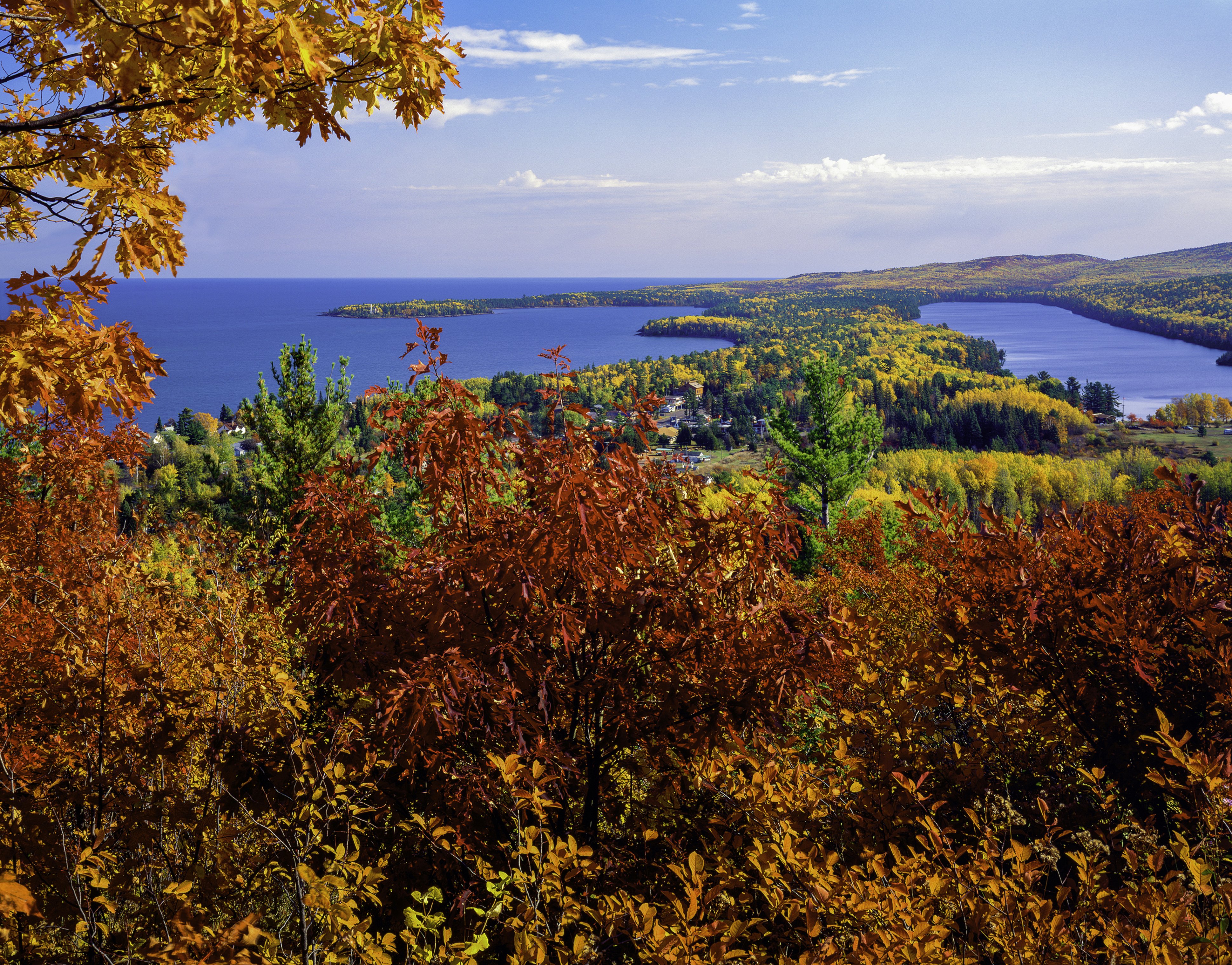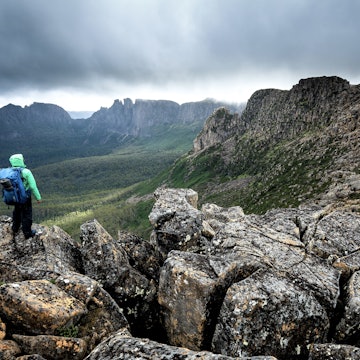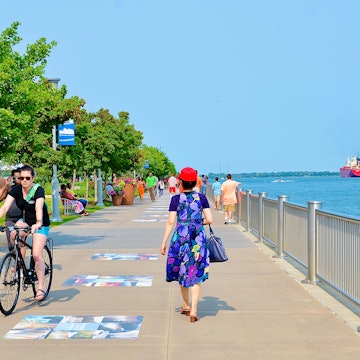

Dive into summer at one of Michigan's beautiful lakes in the Upper Peninsula © Tim Bieber / Getty Images
Every season in Michigan comes with its own side of magic.
Summertime buzzes with travelers when draws like the Great Lakes, charming islands and unspoiled wilderness are at their most accessible, but there are also vibrant spring flowers, eye-popping fall foliage, and a vast array of winter sports – and a chance to see the Northern Lights.
Here’s our seasonal guide to help you choose the best time to visit Michigan.
May to September is the best time for outdoor adventures
Michigan’s high season kicks off on Memorial Day (the last Monday in May), though adventurers will already be outdoors as major draws – like kayaking along the Pictured Rocks National Lakeshore – are in full swing. Ferries start to depart more regularly to popular spots like Beaver Island and Mackinac Island, while summer-only establishments – in places like Copper Harbor on the Upper Peninsula (the UP) – lift their shutters.
The weather is mostly sunny and warm, with temperatures ranging from 76°F (24°C) to 85°F (29°C). This means lots of summer-only outdoor activities begin: shipwreck tours of Thunder Bay National Marine Sanctuary, cliff jumping from Marquette’s bay, kayaking to Turnip Rock and glamping in a blueberry field on the shores of the UP – not to mention hiking, biking and other sweat-inducing pursuits.
Sleeping Bear Dunes National Lakeshore is at its most colorful from May to August and it's also when the lake is most accessible. Trekkers take note: Isle Royale National Park is only open from mid-April through October, but summer (late June to late September) promises the best weather, plus moose-sighting opportunities.

March to May and October to November are the best times for photographers
Visiting Michigan in the spring (mid-March to mid-June) is a gamble as snow has been known to fall in April and – further north – in May. During the shoulder season, the state is, for the most part, blissfully quiet, with very few crowds, but note that an increasing number of restaurants, tourist attractions and tour operators close when the leaves turn, particularly in the north. There are year-round ferries (weather-permitting) to places like Mackinac Island, though, catering to residents.
Few sights match the beauty of the state’s wild landscapes and national parks. Come fall (late September), photographers should seek out spots like the Porcupine Mountains Wilderness, which is often blanketed in red and copper leaves.
Michigan has another jaw-dropping autumnal attraction too: the state is far enough north for the Northern Lights, aka Aurora Borealis, to make an occasional appearance. Eagle Harbor on the Keweenaw Peninsula and Headlands International Dark Sky Park, near the Mackinac Bridge, are among the best places to catch a show.
Spring has its own host of captivating nature displays. Visit the city of Holland, Michigan, in late April or early May to see the tulip fields ablaze with rows of brightly colored flowers, or head to Traverse City when its cherry blossoms transition to full bloom. Comerica Park in Detroit, meanwhile, swings into life each April as the city's Major League Baseball team, the Detroit Tigers, return for another season.

December to February is the best time for winter sports
Most of Michigan's warmer-weather draws, like lighthouse tours, Great Lakes kayaking and Traverse City’s tall-ship boat excursions, have closed by December. The days are shorter and colder, keeping many tourists at bay, but those brave enough to face Michigan during its coldest months – when temperatures can drop below 0°F (-18°C) – will witness a side of the Wolverine State few travelers get to see.
A host of ski resorts, such as Crystal Mountain, just outside Traverse City, start to welcome visitors. In Marquette, the Noquemanon Trail Network has 35 miles of groomed, single-track trails that get busy with snowshoers and cross-country skiers. Michigan also hosts the world's largest snowmobile race in Sault Ste. Marie, in the very far north of the Upper Peninsula. The International 500 Snowmobile Race is the state’s take on the Indianapolis 500.
With frozen waterfalls at Pictured Rocks National Lakeshore and mushing at Double JJ Resort in Rothbury, just northeast of Muskegon, there's plenty of variety for visitors throughout the winter. Not to mention cozy, come-in-from-the-cold breweries like Bell’s Brewery in Kalamazoo and Founders Brewing Company in Grand Rapids. One thing to note, though, when visiting Michigan in the winter – the further north you go, the fewer restaurants that are open. Bring groceries and other supplies for any northerly winter trips.
















